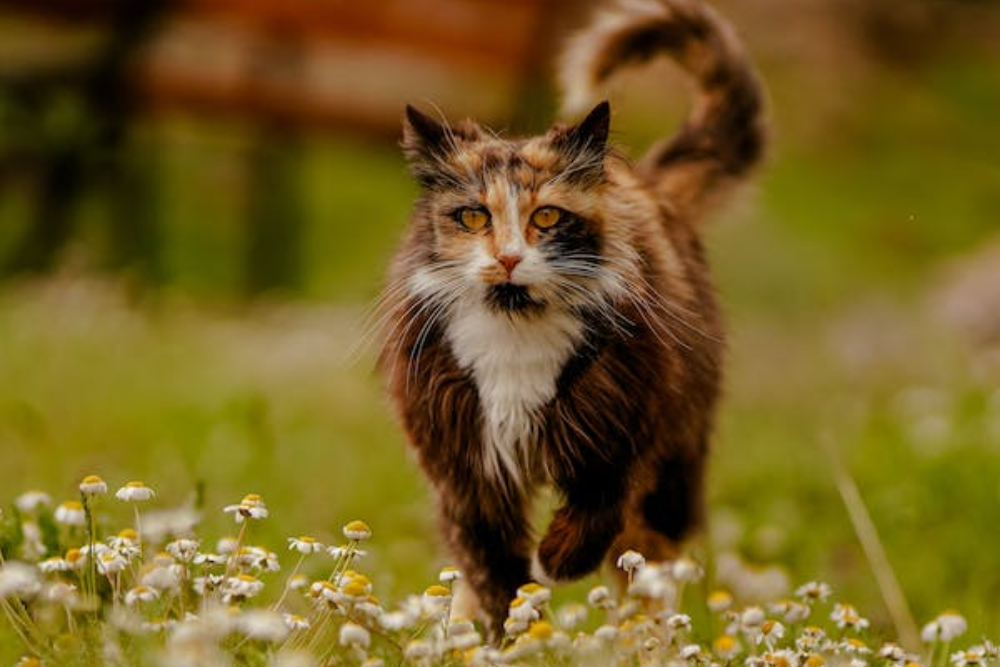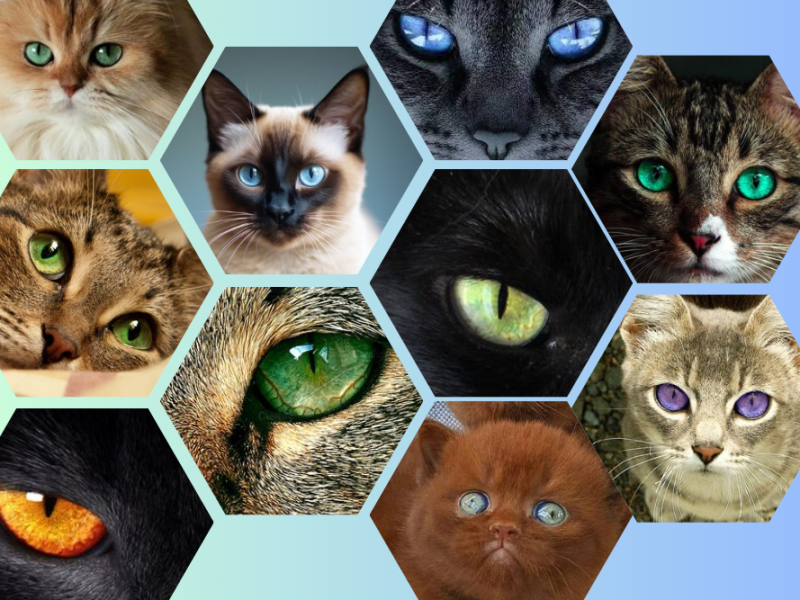Welcome to the intriguing world of tortoiseshell cat tortitude—a unique blend of vibrant personalities and distinctive behaviors that set these feline companions apart. Known for their tricolor coats adorned with black, orange, and cream hues, tortoiseshell cats exhibit independent and strong-willed traits collectively termed “tortitude.” In this concise guide, we’ll explore the origins, characteristics, and care tips for these captivating cats, offering insights into their quirks, communication styles, and the joy they bring to those fortunate enough to share their lives with them. Whether you’re a seasoned cat owner or a curious enthusiast, join us on this brief journey into the enchanting realm of tortoiseshell cat tortitude.
The Unique Personality of Tortoiseshell Cats:
Tortoiseshell cats, with their distinctive tricolor coats, are not only a visual delight but also boast a personality as captivating and diverse as their vibrant exteriors. Commonly known as “tortitude,” their unique temperament sets them apart in the feline world. One hallmark of tortoiseshell cats is their independent nature—these felines exude a sense of self-assurance and a desire for autonomy. This characteristic often translates into a strong-willed demeanor, making them resilient and confident in their actions.
Beyond their independent streak, tortoiseshell cats are known for their spirited and unpredictable behaviors. Each cat’s personality is a unique blend of playfulness, curiosity, and occasional stubbornness. Their owners often find themselves amused by the spontaneous antics and quirks that make every tortoiseshell cat an individual with a distinct character.
Tortitude also manifests in the vocalizations of these cats. They are not shy about expressing their opinions, and their range of meows, chirps, and purrs adds an audible layer to their communicative style. Understanding these vocal cues becomes essential in decoding the ever-entertaining language of tortoiseshell cats, allowing owners to connect more deeply with their furry companions.
Despite their occasional stubbornness, tortoiseshell cats form strong bonds with their human counterparts. They are known for their affectionate nature and can be fiercely loyal to their chosen companions. Building a bond with a tortoiseshell cat involves patience, respect for their need for independence, and a willingness to engage in interactive play and affectionate moments.
It’s essential to acknowledge that living with a tortoiseshell cat comes with both challenges and rewards. While their independent spirit can make them a joy to be around, it may also lead to occasional moments of defiance. However, the unique and unpredictable nature of tortitude adds a dynamic and enriching aspect to the relationship between these feline companions and their owners.
Understanding Tortitude
Tortitude is a term coined to describe the distinctive attitude and behavior exhibited by tortoiseshell cats. Originating from the unique combination of their genetics and temperament, cats with tortitude are known for their assertiveness, strong-willed nature, and a touch of unpredictability. As owners, understanding and embracing tortitude is crucial for building a strong and harmonious bond with these charming companions.
The Colorful Coats of Tortoiseshell Cats
Tortoiseshell cats are living canvases, adorned with a captivating palette that mesmerizes all who encounter them. The distinctive tricolor coats, a melange of rich black, warm orange, and creamy hues, create a visual symphony that sets these felines apart in the world of domestic cats. The intricate patterns formed by the blending of these colors result in a unique and individualized masterpiece on each tortoiseshell cat.
One of the most enchanting aspects of their coats is the randomness of the color distribution. The blend of black and orange patches, sometimes interspersed with white, creates intricate patterns that resemble a painter’s brushstroke. No two tortoiseshell cats are identical, and this inherent uniqueness adds to their allure. The rich diversity in coat patterns often leads to fanciful names like “tortie,” “brindle,” or “calico,” each reflecting the distinctive tapestry of colors that adorns these feline companions.
Beyond their aesthetic appeal, the colors of a tortoiseshell cat’s coat can sometimes be indicative of their genetic composition. The presence of both black and orange fur is often linked to the cat having two X chromosomes, with the combination of these chromosomes contributing to the diverse coloration.
While the visual impact of their coats is undeniable, tortoiseshell cats are not just a treat for the eyes—they embody a personality as vibrant as their exteriors. This unique blend of striking aesthetics and captivating temperament makes tortoiseshell cats a cherished and visually stunning addition to any home.
Dealing with Tortitude in Everyday Life
Tortitude, a term coined to describe the unique personality traits of tortoiseshell cats, encompasses a delightful mix of independence, playfulness, and vocal expressions. Understanding the essence of tortitude lays the foundation for a rewarding relationship with these spirited feline companions.
Embracing Independence
Tortoiseshell cats value their autonomy, making independence a hallmark of their personality. Creating an environment that allows them space for solitary activities and respecting their need for autonomy fosters a positive and harmonious living arrangement.
Channeling Playfulness
The playful antics of torties add a vibrant dynamic to daily life. Engaging in interactive play sessions, providing stimulating toys, and encouraging their natural instincts not only enrich their lives but also offer a healthy outlet for their abundant energy.
Navigating Vocal Expressions
Tortoiseshell cats are known for their vocal prowess, utilizing meows, purrs, and chirps to communicate. Learning to interpret their vocal cues enhances communication and strengthens the bond between owner and cat, creating a deeper understanding of their emotional needs.
Patience and Positive Reinforcement
Dealing with the occasional challenges of tortitude, such as moments of stubbornness or defiance, requires patience and positive reinforcement. Gentle encouragement, coupled with rewarding good behavior, contributes to a cooperative and affectionate relationship.
Building a Strong Bond
Building a strong bond with a tortoiseshell cat involves creating a secure and loving environment. Offering affection on their terms, providing cozy spots for relaxation, and establishing routine activities contribute to a sense of trust, forming the basis for navigating the highs and lows of tortitude.
Celebrating Unique Personalities
As owners adapt to the charms and quirks of tortitude, they embark on an adventure that celebrates the distinctive personalities these feline companions bring into their everyday lives. The unique blend of independence, playfulness, and vocal expressions makes living with a tortoiseshell cat a rich and fulfilling experience.
Dealing with tortitude in everyday life involves not only understanding and accommodating their unique traits but also celebrating the joy and individuality that tortoiseshell cats bring into the homes of those fortunate enough to share their lives with these spirited feline friends.
Tortoiseshell Cats as Loving Companions
Beneath the bold exterior and occasional feistiness lies the heart of a loving companion. Tortoiseshell cats form strong bonds with their owners, seeking affection and offering companionship in return. Potential cat owners are encouraged to consider adopting a tortoiseshell cat for a unique and rewarding experience.
Overcoming Challenges in Training Tortoiseshell Cats
Successfully overcoming these challenges requires a nuanced understanding of their independent nature, strong-willed demeanor, and the spirited energy that defines their character.
Recognizing Independence
One of the primary challenges in training tortoiseshell cats lies in their strong sense of independence. These felines, with their innate desire for autonomy, may exhibit resistance to traditional training methods that demand strict adherence. Recognizing and respecting their need for self-governance forms the cornerstone of effective training strategies.
Tailoring Training to Individual Quirks
Torties, as they are affectionately called, often exhibit unpredictable and spontaneous behaviors. Tailoring training approaches to accommodate their individual quirks and preferences is essential. Flexibility in methods, coupled with patience, allows for a more personalized training experience that aligns with the unique personality of each tortoiseshell cat.
Positive Reinforcement for Cooperation
Tortoiseshell cats respond well to positive reinforcement. Unlike punitive measures, which may lead to defiance, rewarding good behavior with treats, affection, or playtime encourages cooperation. This positive approach not only fosters a sense of trust but also makes the training process more enjoyable for both cat and owner.
Consistency and Routine
Establishing a consistent training routine is vital when working with tortoiseshell cats. These felines thrive on predictability, and incorporating training sessions into a daily routine helps create a sense of structure. Consistency builds a foundation for learning and reinforces positive behaviors over time.
Interactive and Engaging Training
Torties, with their playful nature, respond well to training that incorporates interactive and engaging elements. Interactive toys, puzzle feeders, and activities that stimulate their minds provide a constructive outlet for their energy. Keeping training sessions lively and enjoyable ensures active participation and cooperation.
Patience as a Virtue
Patience becomes a virtue when training tortoiseshell cats. Their spirited and independent nature may lead to occasional moments of defiance or selective hearing. Maintaining a calm demeanor, even in the face of challenges, helps build a positive association with training and encourages continued cooperation.
Seeking Professional Guidance
For owners facing persistent challenges in training their tortoiseshell cats, seeking professional guidance can be invaluable. Certified animal behaviorists or experienced trainers familiar with the intricacies of feline behavior can provide tailored advice and strategies to address specific training obstacles.
Celebrating Progress and Individuality
As training progresses, celebrating even small achievements is crucial. Recognizing and celebrating the unique progress of each tortoiseshell cat acknowledges their individuality and reinforces a positive training environment. Positive affirmations and rewards create a sense of accomplishment for both owner and feline.
Conclusion:
In conclusion, tortoiseshell cats bring a burst of color and personality to the lives of their owners. Understanding and embracing their unique traits, often referred to as “tortitude,” is essential for building a strong and fulfilling relationship. From their striking coats to their individual quirks, tortoiseshell cats stand out as one of the most captivating and beloved feline companions.
FAQs:
- Are all tortoiseshell cats female?
- While the majority are female, male tortoiseshell cats do exist but are relatively rare.
- Is tortitude a consistent trait in all tortoiseshell cats?
- While many exhibit strong-willed behavior, each cat is an individual, and personalities can vary.
- Can tortoiseshell cats be trained like other breeds?
- Yes, with patience and positive reinforcement, tortoiseshell cats can be trained effectively.
- Do tortoiseshell cats require special grooming due to their coat patterns?
- Regular grooming is recommended to keep their coats in good condition, but no special care is usually needed.
- What is the lifespan of a typical tortoiseshell cat?
- Like any cat, the lifespan can vary, but with proper care, they can live well into their teens or beyond.


